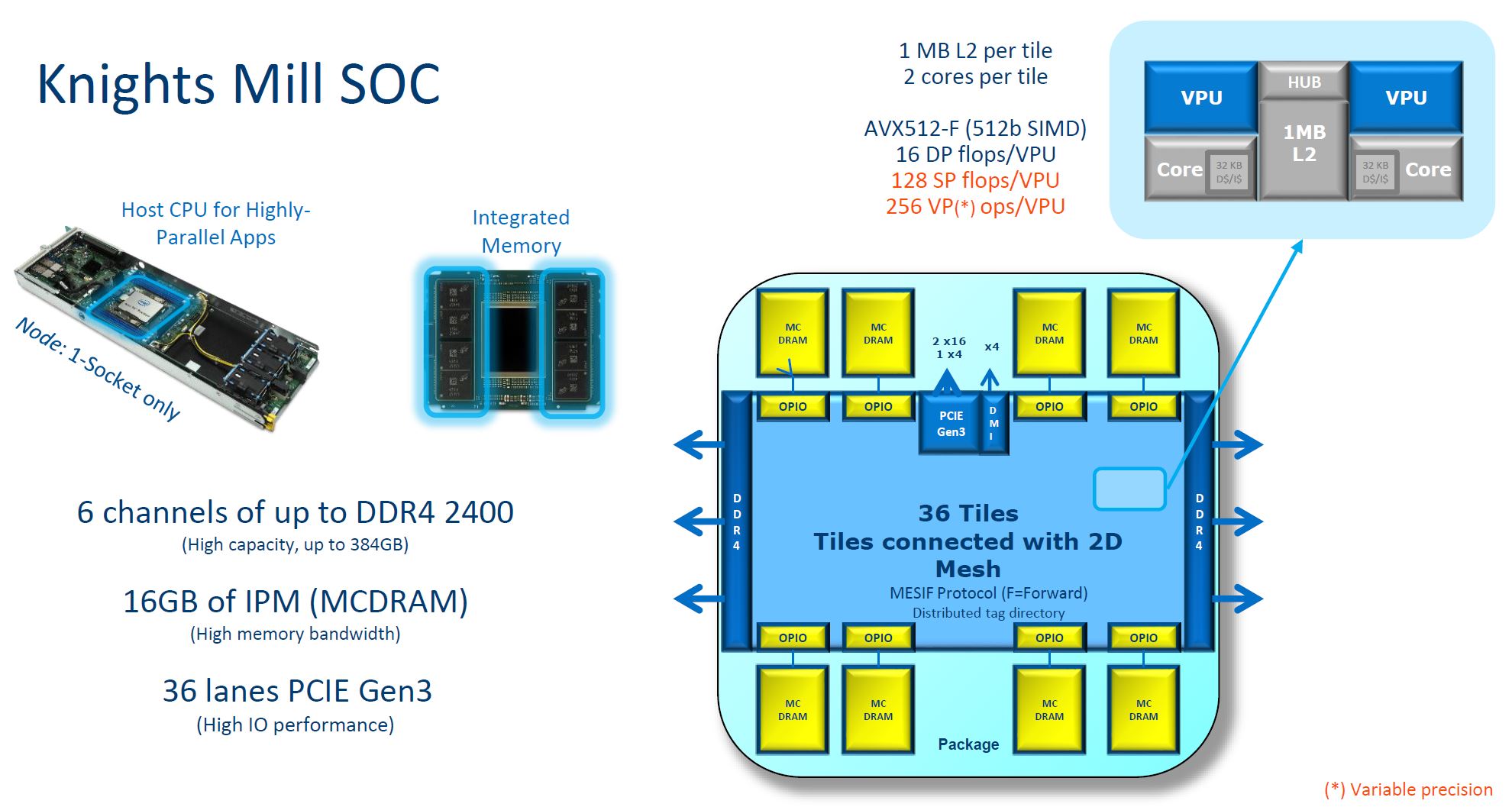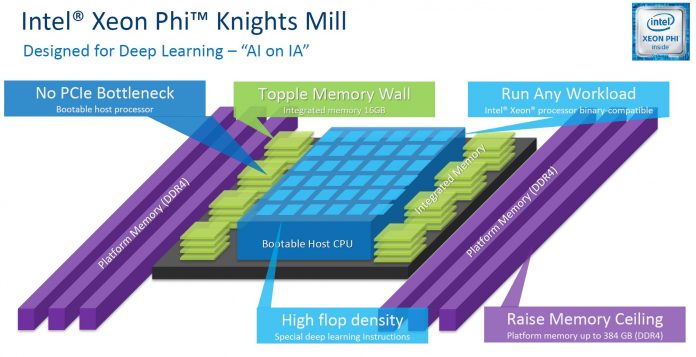In our meetings at SC17, we heard that the Knights Mill launch would be a quiet one with little fanfare. The reason is simple, the Intel Xeon Phi x205 product is a niche chip. It is meant for the clusters that went with the Knights Landing Intel Xeon Phi x200 series that STH started working with last year. With the original Intel Xeon Phi x200 series, Intel pushed a developer workstation, one of which STH was first to review (see Supermicro SYS-5038K-I-ES1 Intel Xeon Phi x200 Developer Workstation Review.) The Intel Xeon Phi x205 does not have the same developer push and we gleaned a bit about why during Supercomputing 2017 in Denver this year.
Story Behind the Intel Xeon Phi x205 Knights Mill Launch
The Intel Knights Mill product is essentially being launched to fulfill a promise to a customer base that there would be a product, based on Xeon Phi, that would target deep learning training for a scale-out market. Intel has made little secret that the Intel Nervana NNP it has shown off is its future vision for training and hence why the NNP has a lot more hype behind it.

The Xeon Phi family has first and foremost always been a HPC oriented product line. As the US government decided to bring in its exascale computing program, Intel shifted its efforts and future product plans towards the new goalpost. One impact of the exascale timeline and Intel Nervana NNP release is a questionable path forward for some of the technologies that we see with the Intel Knights Mill series.
At the end of the day, the market for these chips is essentially going to be existing HPC/ supercomputing clusters rather than a broad set of users like NVIDIA targets and AMD is trying to target. For small installations of a few chips, you are likely better off using an NVIDIA GPU rather than a KNM part because CUDA will be around in a few years while many of Intel’s new technologies for KNM we expect Intel to replace in future products.
About the Intel Xeon Phi x205 Knights Mill Series
Given the extremely limited audience for the Intel Xeon Phi x205 Knights Mill processor, the understandable pullback on its promotion from Intel, and what we have published previously, we are going to simply show the specs.

As one can see, this is a relatively small stack. The standout here is perhaps the TDP which is 320W. The Intel LGA3647 platform was designed for this high TDP range. At SC16 last year in Salt Lake City, water cooling servers was a “hot” topic because these CPUs were coming. Some of the denser solutions we saw required in-building or rack level water cooling. The passively cooled solutions we saw in NDA suites had the massive copper heatsink and heat pipe contraptions that we, unfortunately, were not allowed to take pictures of.
If you want to read more about Knights Mill, you can read our in-depth piece from Hot Chips this year Intel Xeon Phi Knights Mill for Machine Learning. If you do work with an Intel Xeon Phi x200 family cluster, then many of the technologies have a good chance making it your way. On the other hand, if you are outside of that ecosystem, get an NVIDIA CUDA card or wait for the Intel Nervana NNP.




